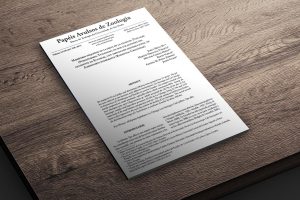Els Casots (Subirats, Catalonia), a key site for the Miocene vertebrate record of Southwestern Europe
| Título: | Els Casots (Subirats, Catalonia), a key site for the Miocene vertebrate record of Southwestern Europe |
| Identificador de recurso: | https://www.tandfonline.com/doi/full/10.1080/08912963.2022.2043296 |
| Fecha: | 2022-03-01 |
| Autor: | |
| Otros colaboradores: | |
| Editorial: | Hisrotical Biology
An International Journal of Paleobiology |
| Derechos: | Acceso Abierto |
| Descripción | Els Casots is one of the richest fossil vertebrate sites of the Vallès-Penedès Basin (Catalonia, Spain). It was discovered in 1989 and excavated briefly during the 1990s, resulting in the recovery of thousands of remains and the erection of several new mammal species. Excavations were resumed in 2018 and continue to date. Here we provide updated results regarding the age, stratigraphy, biota and palaeoenvironment of the site. The age of the site is well constrained to ~15.9 Ma thanks to recent bio- and magnetostratigraphic data, thus coinciding with the Miocene Climatic Optimum (MCO). The stratigraphic succession at the site area indicates lacustrine to palustrine environments with cyclically oscillating water level. There are several fossiliferous layers that have yielded a vertebrate fauna comprising up to 75 different vertebrate species including amphibians, reptiles, birds and mostly mammals. The finding of several articulated partial skeletons indicate that the site records an autochthonous to parautochthonous assemblage. The abundance and completeness of the vertebrate remains together with a well-constrained age and detailed stratigraphic and palaeoenvironmental data, make els Casots a key site for understanding wetland ecosystems in southern Europe during the MCO. |
| Claves | Miocene Climatic Optimum; fossil vertebrates; taphonomy; palaeoenvironment; Vallès-Penedès Basin; Spain |
| Relación | e-ISSN: e: 1029-2381 |
| Cobertura | EC |
| Idioma | en |
| Volumen | 4(3) |
| Formato | |
| Tipo de recurso | texto |
| Fuente | DOI: 10.1080/08912963.2022.2043296 |
| Descarga | http://DOI: 10.1080/08912963.2022.2043296 |



